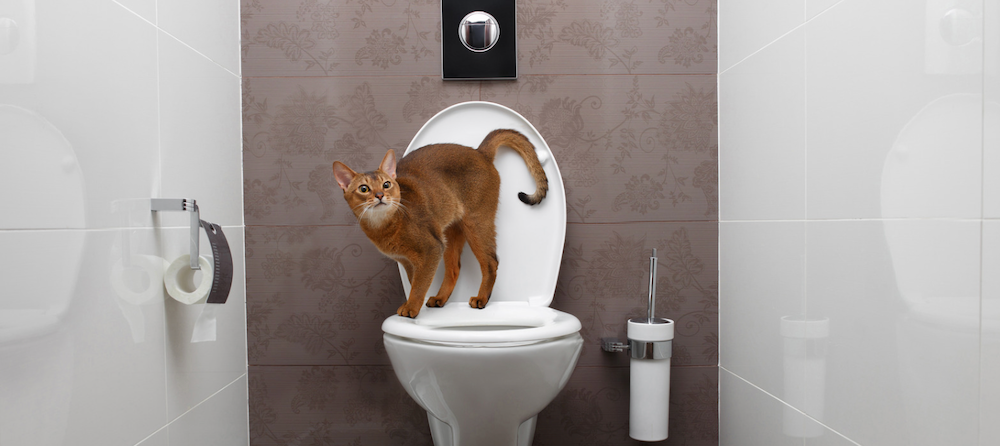Just how do you feel when it comes to How to Dispose of Cat Poop and Litter Without Plastic Bags?

Introduction
As pet cat owners, it's important to be mindful of how we dispose of our feline good friends' waste. While it might seem practical to purge feline poop down the commode, this practice can have detrimental effects for both the environment and human wellness.
Environmental Impact
Purging feline poop presents damaging virus and bloodsuckers into the water system, presenting a substantial danger to aquatic ecological communities. These pollutants can adversely impact aquatic life and compromise water high quality.
Wellness Risks
In addition to ecological concerns, purging pet cat waste can also pose health threats to human beings. Cat feces might contain Toxoplasma gondii, a bloodsucker that can create toxoplasmosis-- a possibly severe disease, specifically for expectant women and people with weakened body immune systems.
Alternatives to Flushing
The good news is, there are much safer and a lot more liable means to throw away pet cat poop. Think about the adhering to options:
1. Scoop and Dispose in Trash
One of the most usual approach of throwing away feline poop is to scoop it into a biodegradable bag and toss it in the trash. Make certain to utilize a specialized clutter scoop and get rid of the waste immediately.
2. Use Biodegradable Litter
Opt for biodegradable cat litter made from products such as corn or wheat. These litters are eco-friendly and can be securely gotten rid of in the trash.
3. Bury in the Yard
If you have a lawn, take into consideration hiding pet cat waste in an assigned location far from vegetable yards and water sources. Make certain to dig deep enough to prevent contamination of groundwater.
4. Set Up a Pet Waste Disposal System
Buy a pet garbage disposal system specifically developed for cat waste. These systems utilize enzymes to break down the waste, minimizing smell and ecological influence.
Verdict
Responsible family pet possession prolongs beyond supplying food and sanctuary-- it likewise entails proper waste monitoring. By refraining from purging feline poop down the commode and opting for different disposal techniques, we can decrease our environmental impact and safeguard human wellness.
Why Can’t I Flush Cat Poop?
It Spreads a Parasite
Cats are frequently infected with a parasite called toxoplasma gondii. The parasite causes an infection called toxoplasmosis. It is usually harmless to cats. The parasite only uses cat poop as a host for its eggs. Otherwise, the cat’s immune system usually keeps the infection at low enough levels to maintain its own health. But it does not stop the develop of eggs. These eggs are tiny and surprisingly tough. They may survive for a year before they begin to grow. But that’s the problem.
Our wastewater system is not designed to deal with toxoplasmosis eggs. Instead, most eggs will flush from your toilet into sewers and wastewater management plants. After the sewage is treated for many other harmful things in it, it is typically released into local rivers, lakes, or oceans. Here, the toxoplasmosis eggs can find new hosts, including starfish, crabs, otters, and many other wildlife. For many, this is a significant risk to their health. Toxoplasmosis can also end up infecting water sources that are important for agriculture, which means our deer, pigs, and sheep can get infected too.
Is There Risk to Humans?
There can be a risk to human life from flushing cat poop down the toilet. If you do so, the parasites from your cat’s poop can end up in shellfish, game animals, or livestock. If this meat is then served raw or undercooked, the people who eat it can get sick.
In fact, according to the CDC, 40 million people in the United States are infected with toxoplasma gondii. They get it from exposure to infected seafood, or from some kind of cat poop contamination, like drinking from a stream that is contaminated or touching anything that has come into contact with cat poop. That includes just cleaning a cat litter box.
Most people who get infected with these parasites will not develop any symptoms. However, for pregnant women or for those with compromised immune systems, the parasite can cause severe health problems.
How to Handle Cat Poop
The best way to handle cat poop is actually to clean the box more often. The eggs that the parasite sheds will not become active until one to five days after the cat poops. That means that if you clean daily, you’re much less likely to come into direct contact with infectious eggs.
That said, always dispose of cat poop in the garbage and not down the toilet. Wash your hands before and after you clean the litter box, and bring the bag of poop right outside to your garbage bins.
https://trenchlesssolutionsusa.com/why-cant-i-flush-cat-poop/

As an avid reader on Don’t flush cat feces down the toilet, I was thinking sharing that piece of content was essential. Are you aware of another person who is enthusiastic about the niche? Please feel free to promote it. Thank you for going through it.
Call Today
Comments on “Reasons Flushing Cat Poop Down Your Toilet Isn't a Good Idea - Tips for Proper Handling”